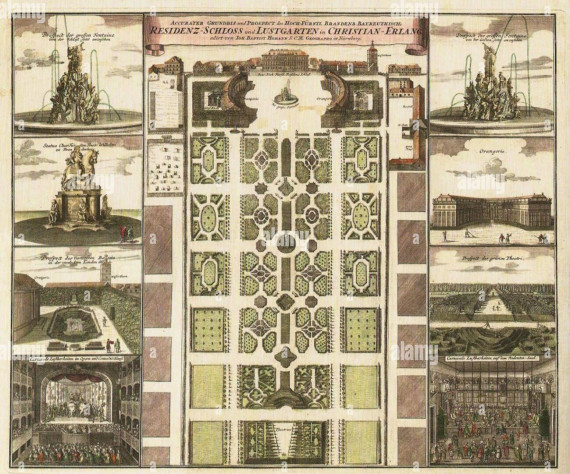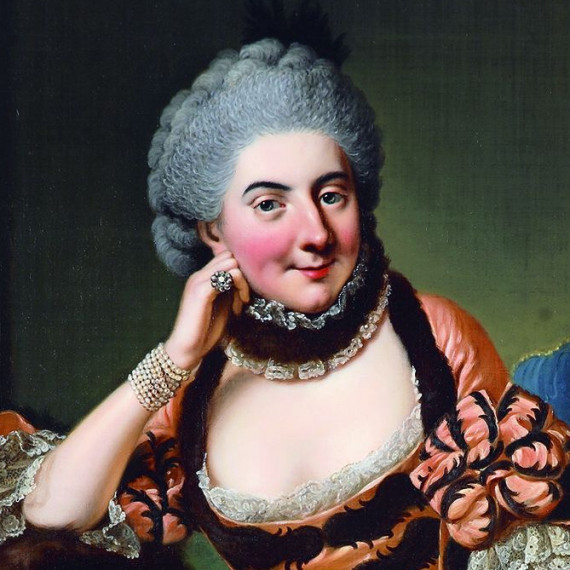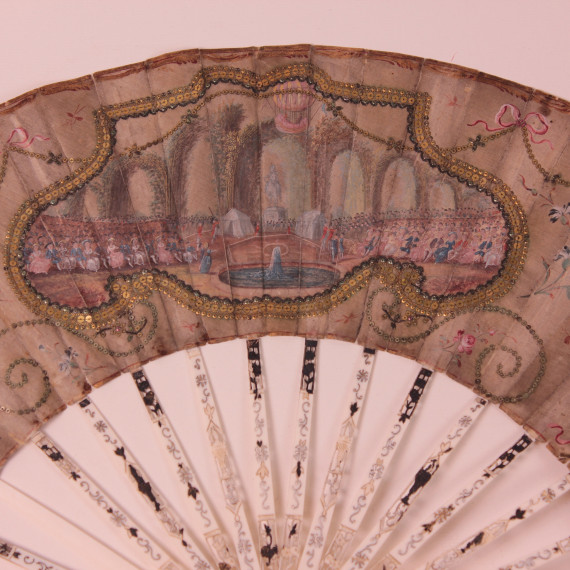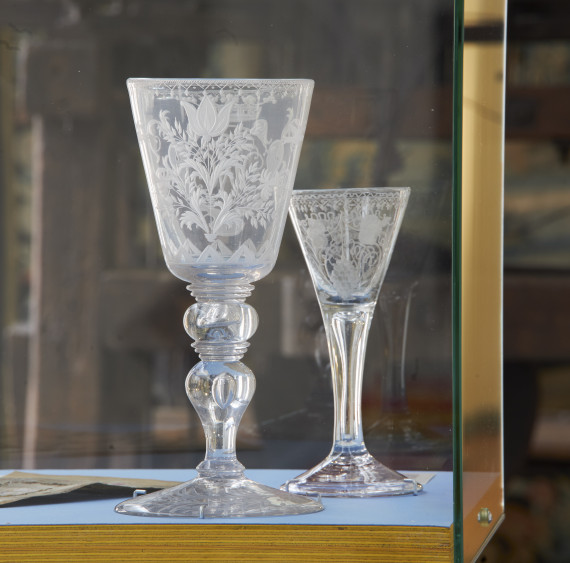Erlangen – Margravial Residence
 Plan of the palace gardens with eight illustrations
Plan of the palace gardens with eight illustrations
Coloured copper engraving by Johann Baptist Homann, Nuremberg, 1721
The extensive palace gardens designed after the French fashion originally included a gravelled parterre fit for carriages. A church dedicated to St Concordia, and planned as a counterpart to the Orangery, was never completed.
Erlangen's 18th century boom was reflected in the construction of the Margravial Palace (1700–1704) and the elevation of both the Old Town and the New Town to the status of Residenzstadt ('Residence Town', one of several secondary princely seats, or 'residences') and sixth 'State Capital' (1708). The social fabric of this trading and manufacturing town now expanded to include members of the aristocracy – complete with their entourages – as administrators and courtiers. Margrave Christian Ernst himself spent the last years of his life in the town he had founded.
Neither the buildings of the Margravial residence nor the small number of noble townhouses had been included in the original plan for the town's layout, but ended up fitting harmoniously into the soberly modest architectural style of the New Town. Singular prestigious structures such as the Orangery (1705) remained the exception.
After the death of Christian Ernst in 1712, Erlangen lost some of its significance as one of the Margravial residences. The palace now merely served as a widow's retreat. Particularly closely connected to the town was 'Erlangen's Own Margravine' Sophie Caroline, who spent her 54-year-long widowhood here. According to her testamentary disposition, the estate of the Margravial seat passed to the university in 1817.

Sophie Caroline Marie of Brunswick-Wolfenbüttel, around 1765
Johann Georg Ziesenis
Oil on canvas
On permanent loan from the Ernst von Siemens Art Foundation, Munich
In 1759, Sophie Caroline Marie of Brunswick-Wolfenbüttel married Margrave Friedrich of Brandenburg-Bayreuth, whose first wife, Margravine Wilhelmine, had died the previous year. After the death of her husband (1763), she spent 54 years at her dowager's residence in Erlangen. During this time, 'Erlangen's Own Margravine' was instrumental in shaping the intellectual and cultural life of the town.

Fan with illustration of a balloon launch in the palace gardens
Painted silk, ivory slats
Erlangen, 1784
This fan originates from the workshop of Erlangen passementiers, the Falkeisen family. Its central panel shows the ascent of a hot air balloon in the palace gardens on 30th September 1784. This fist balloon launch in Erlangen was a spectacular event staged in front of an amazed audience.

Glass goblet and wine glass from the Margravial estate
Cut glass with monogram beneath the crown
1st half of the 18th century
These richly decorated pieces of glassware are some of the few objects that survive of the Margravial palace inventory. The wine glass carries the monogram 'WC' beneath the Margravial crown, and is attributed to the estate of Margravine Wilhelmine. According to the last will and testament of 'Erlangen's Own', the Dowager Margravine Sophie Caroline, they are said to have passed into the possession of servants at the court.
< Previous chapter | Next chapter >
